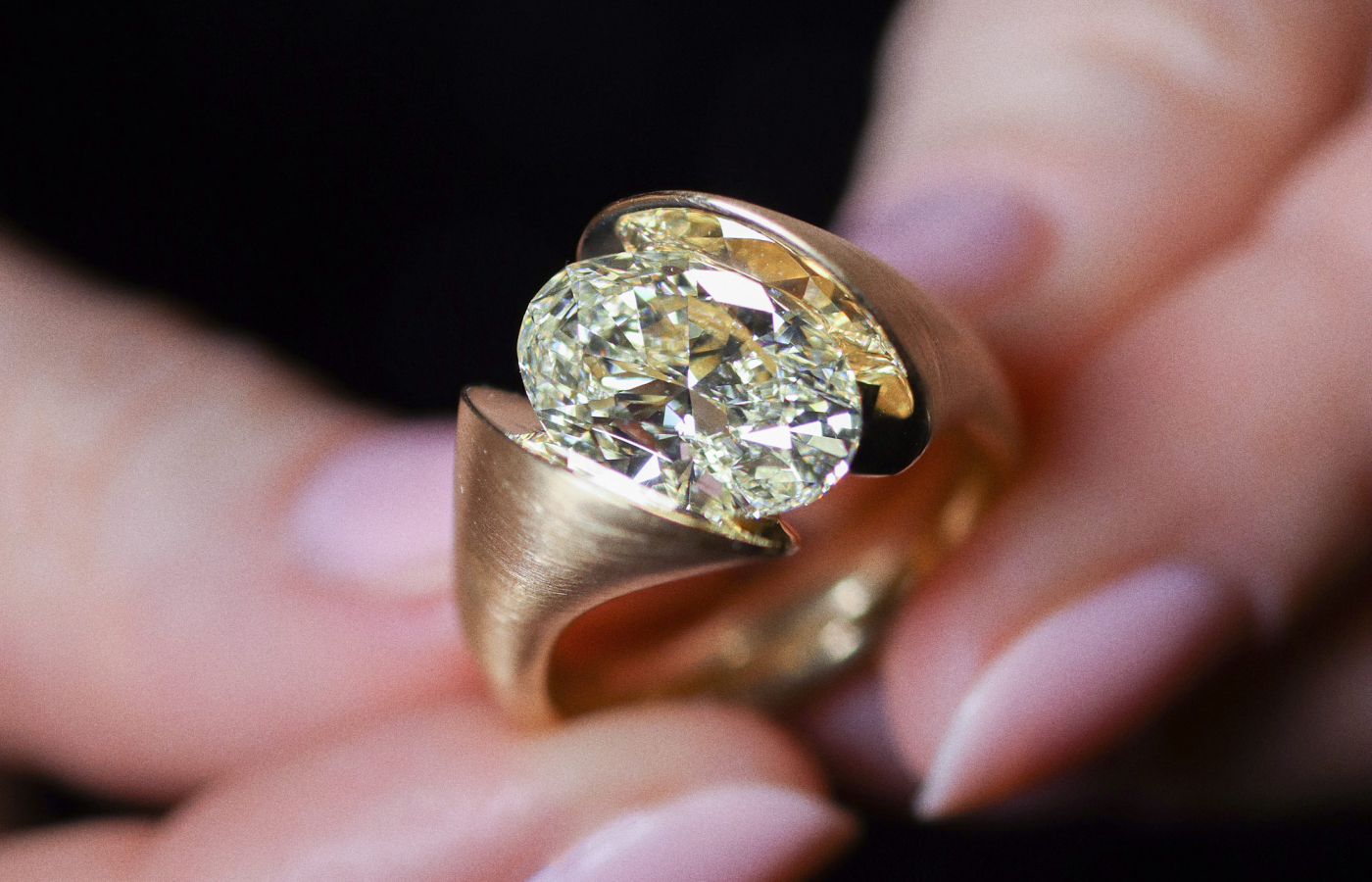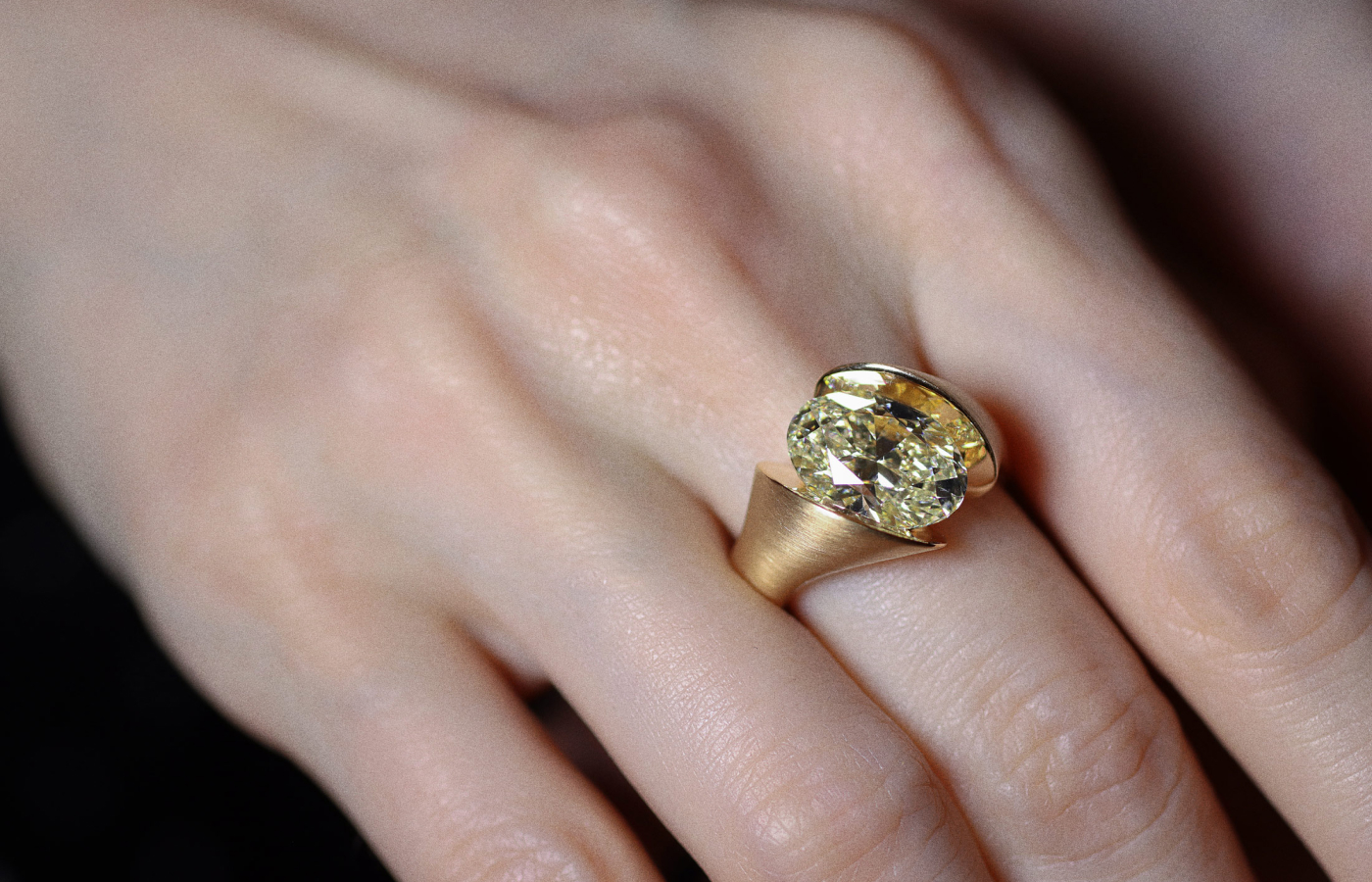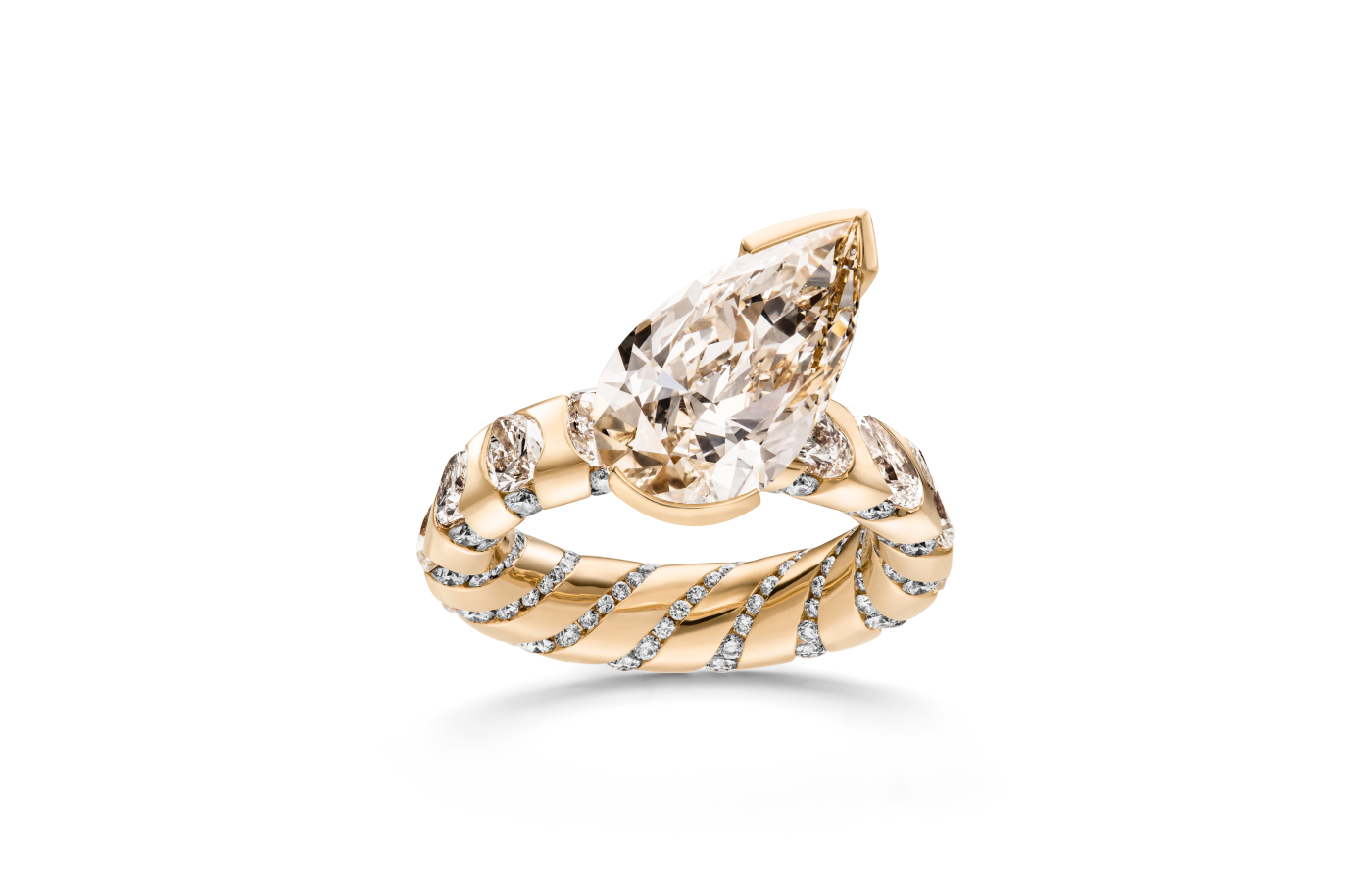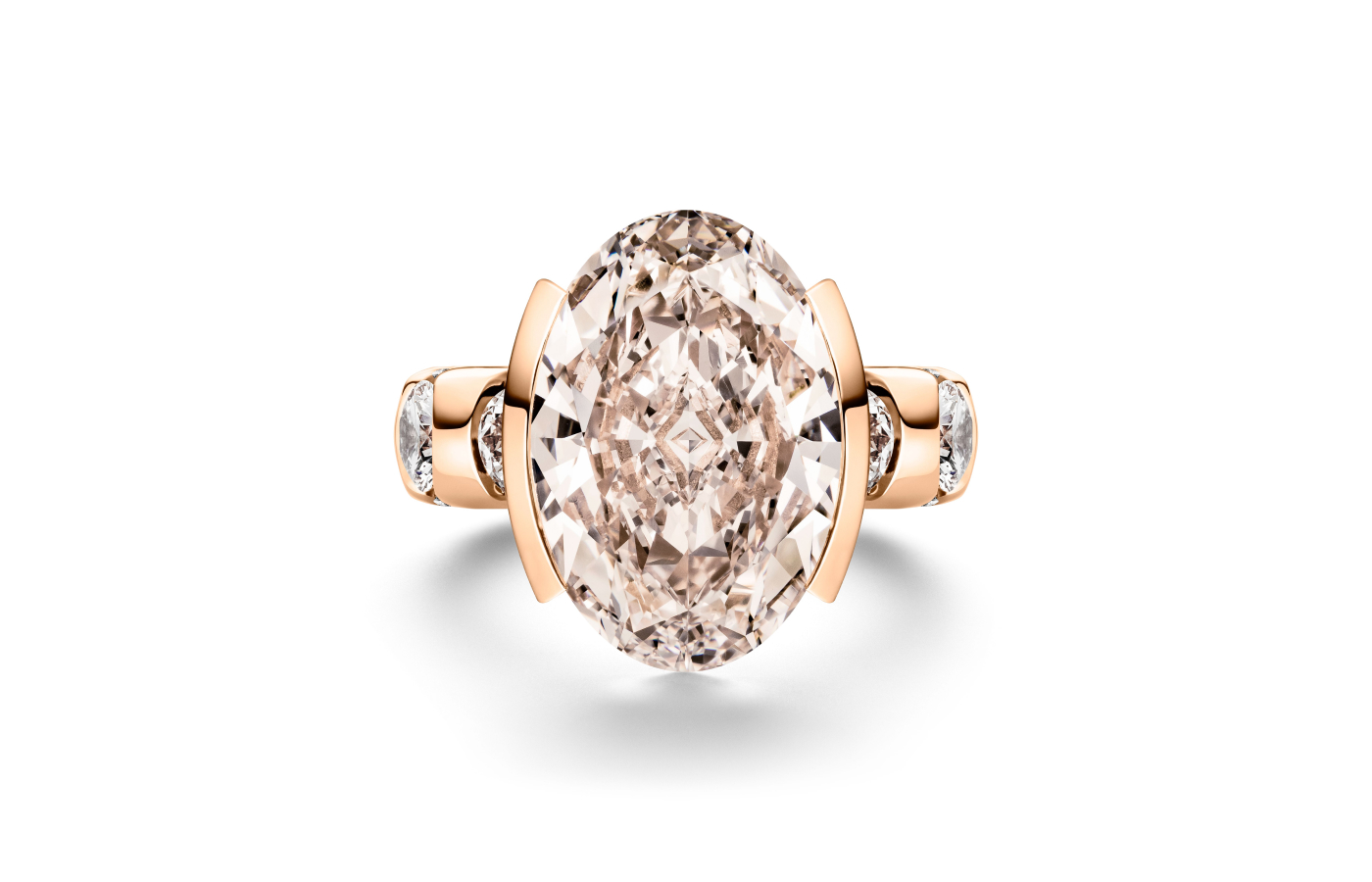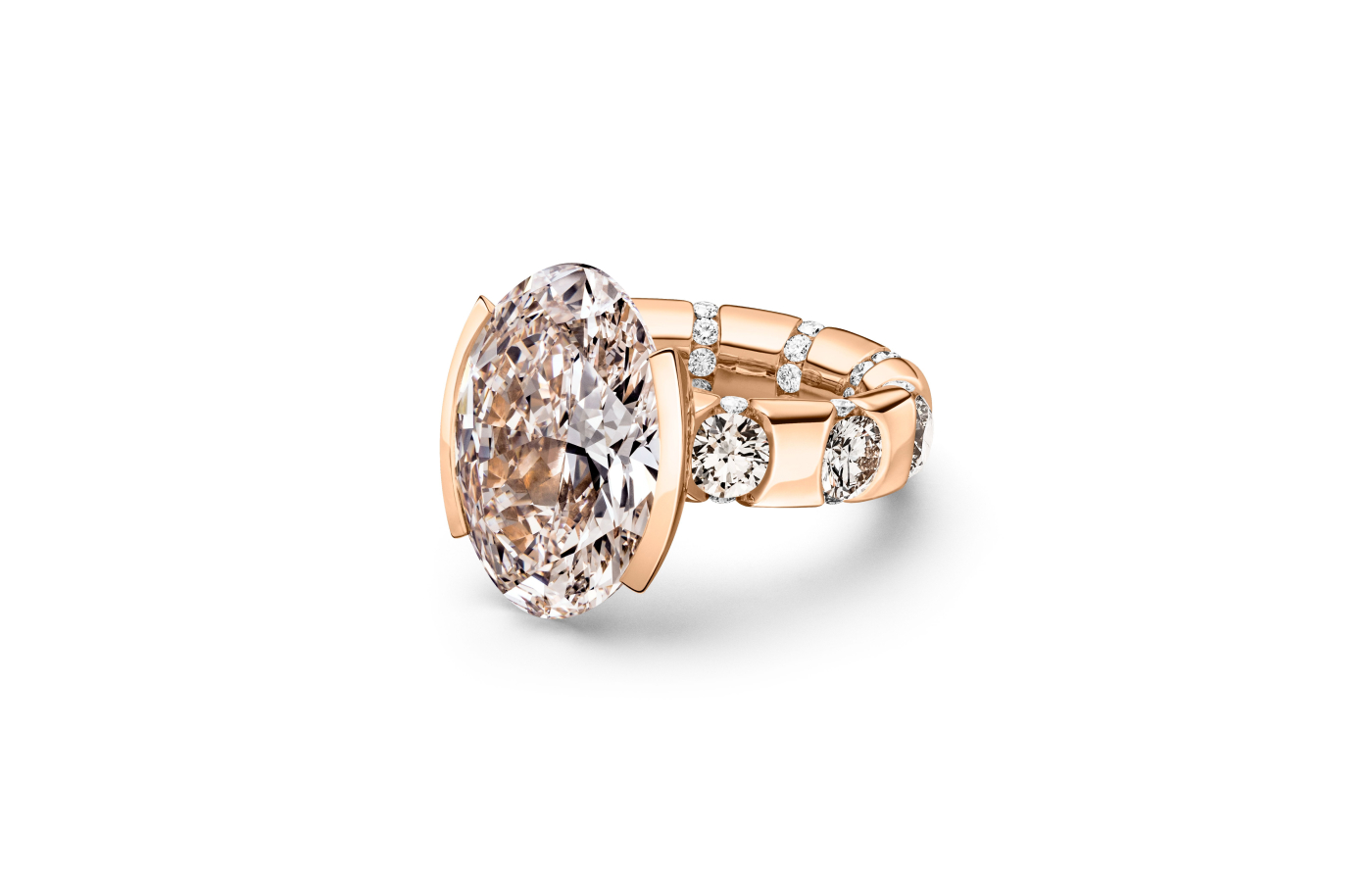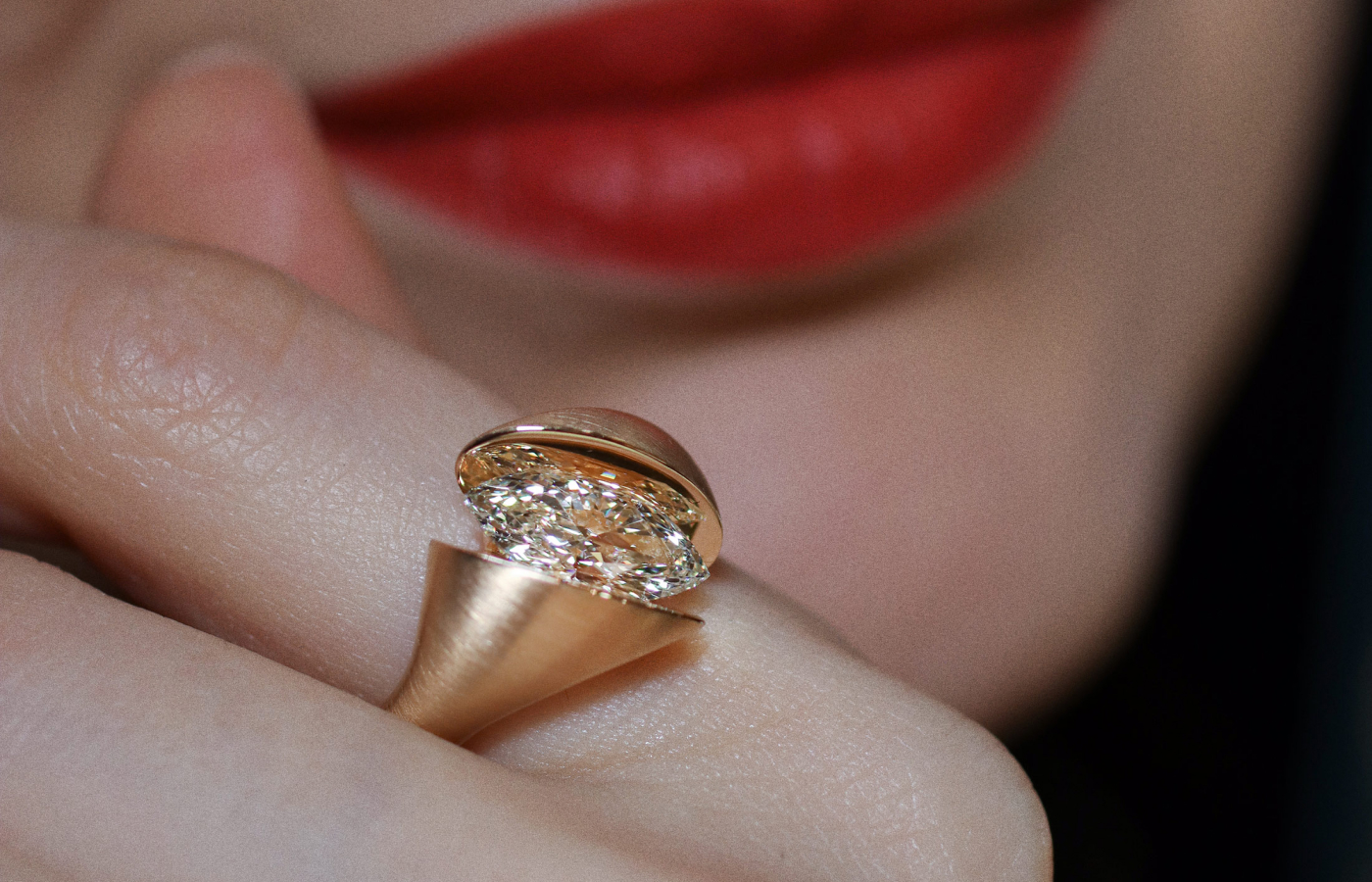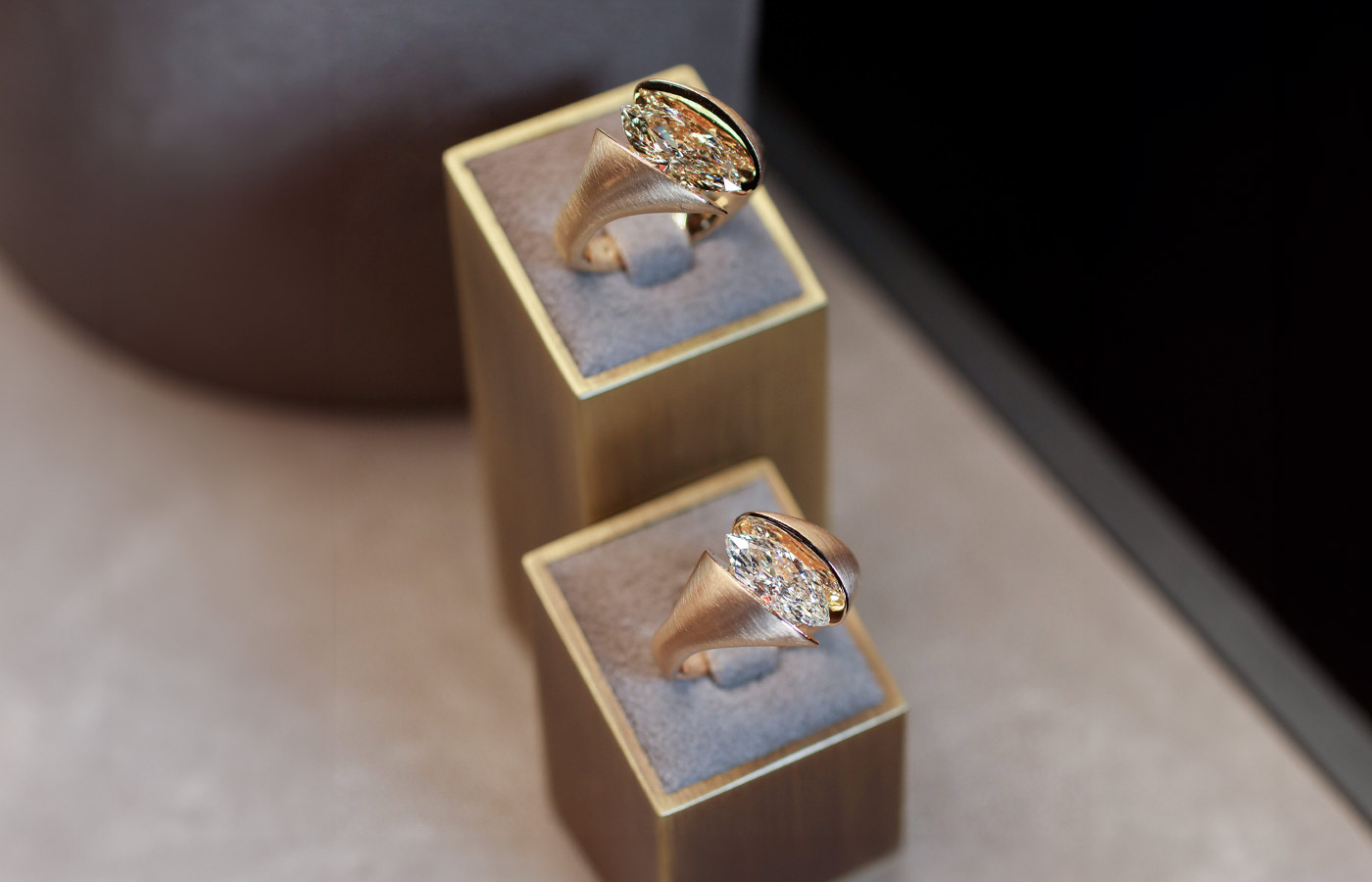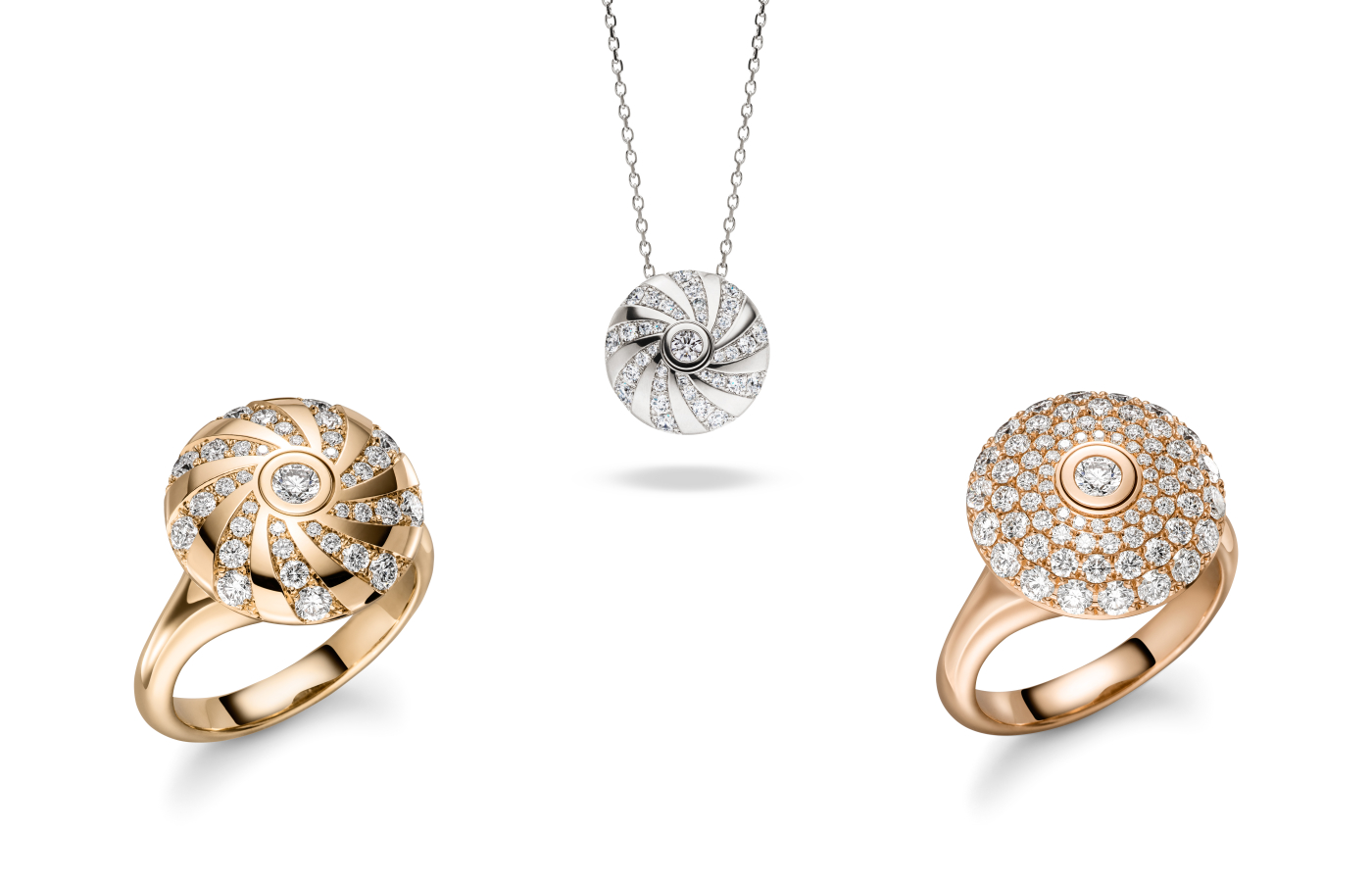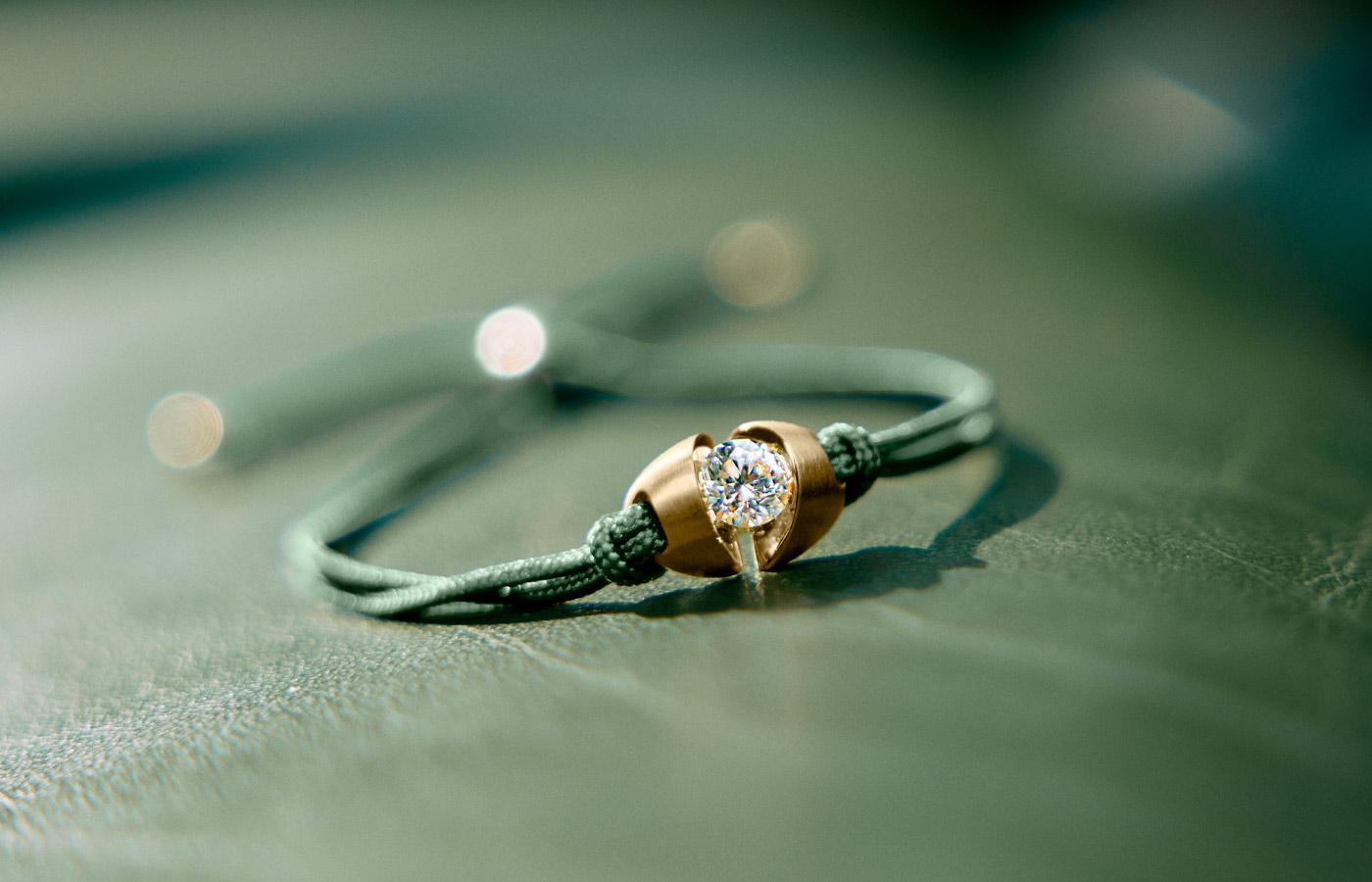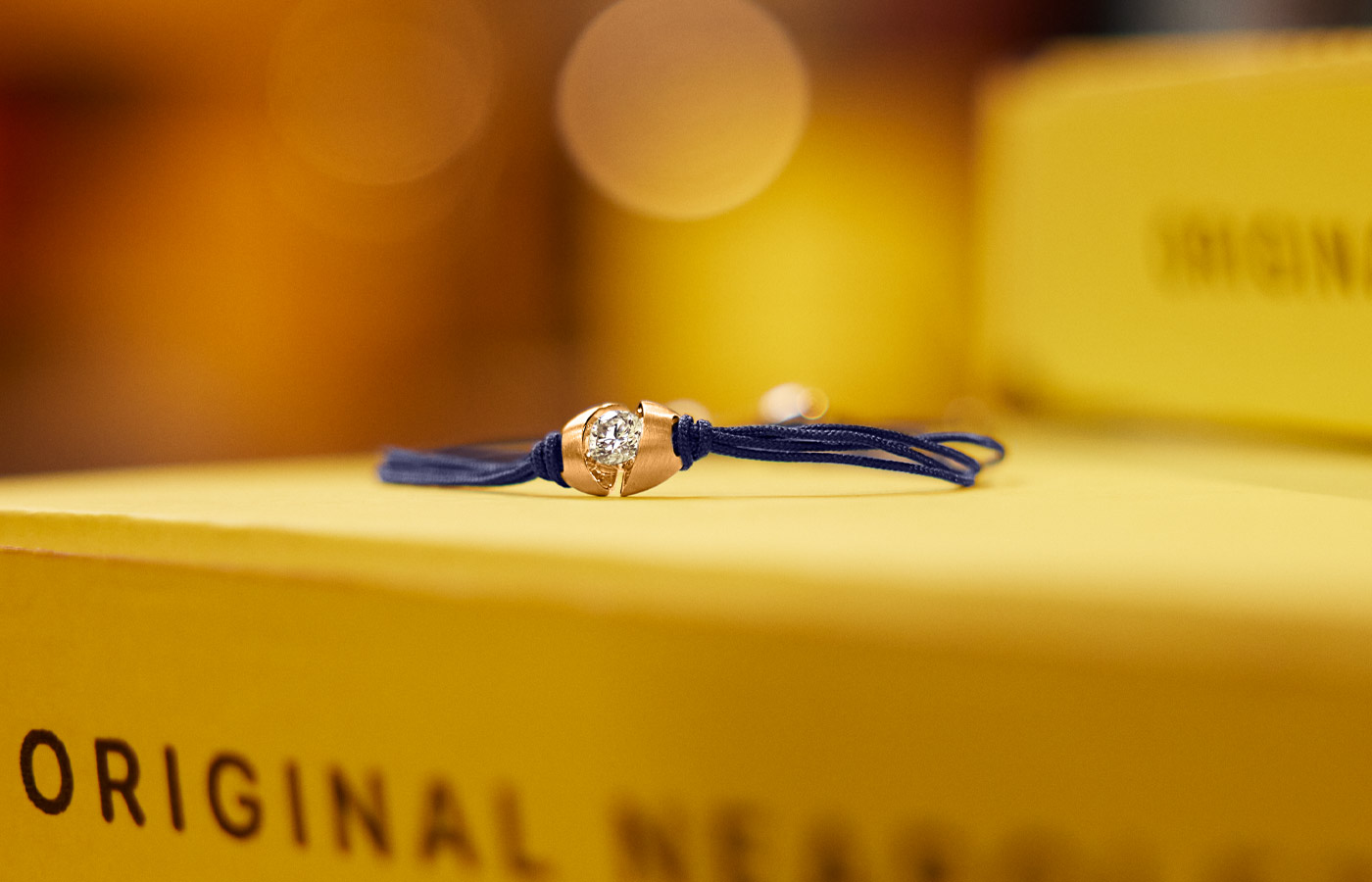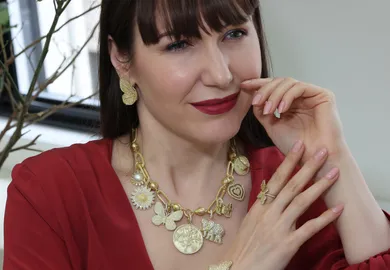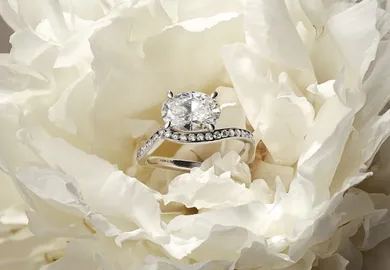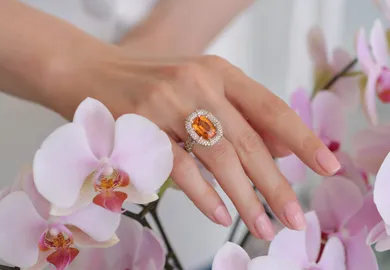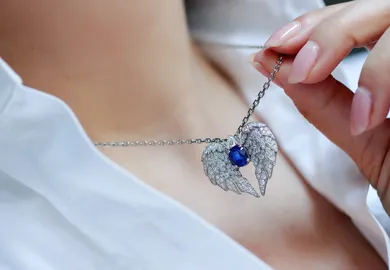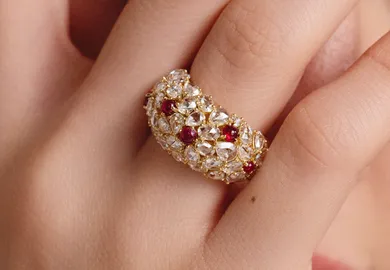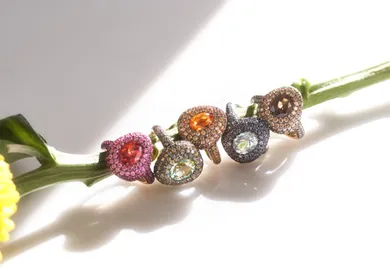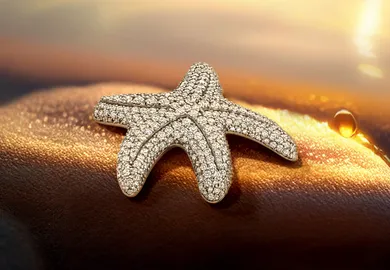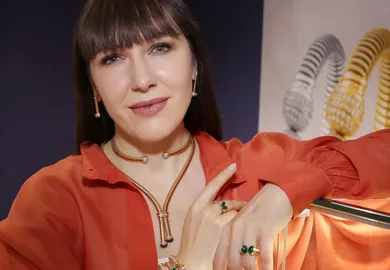
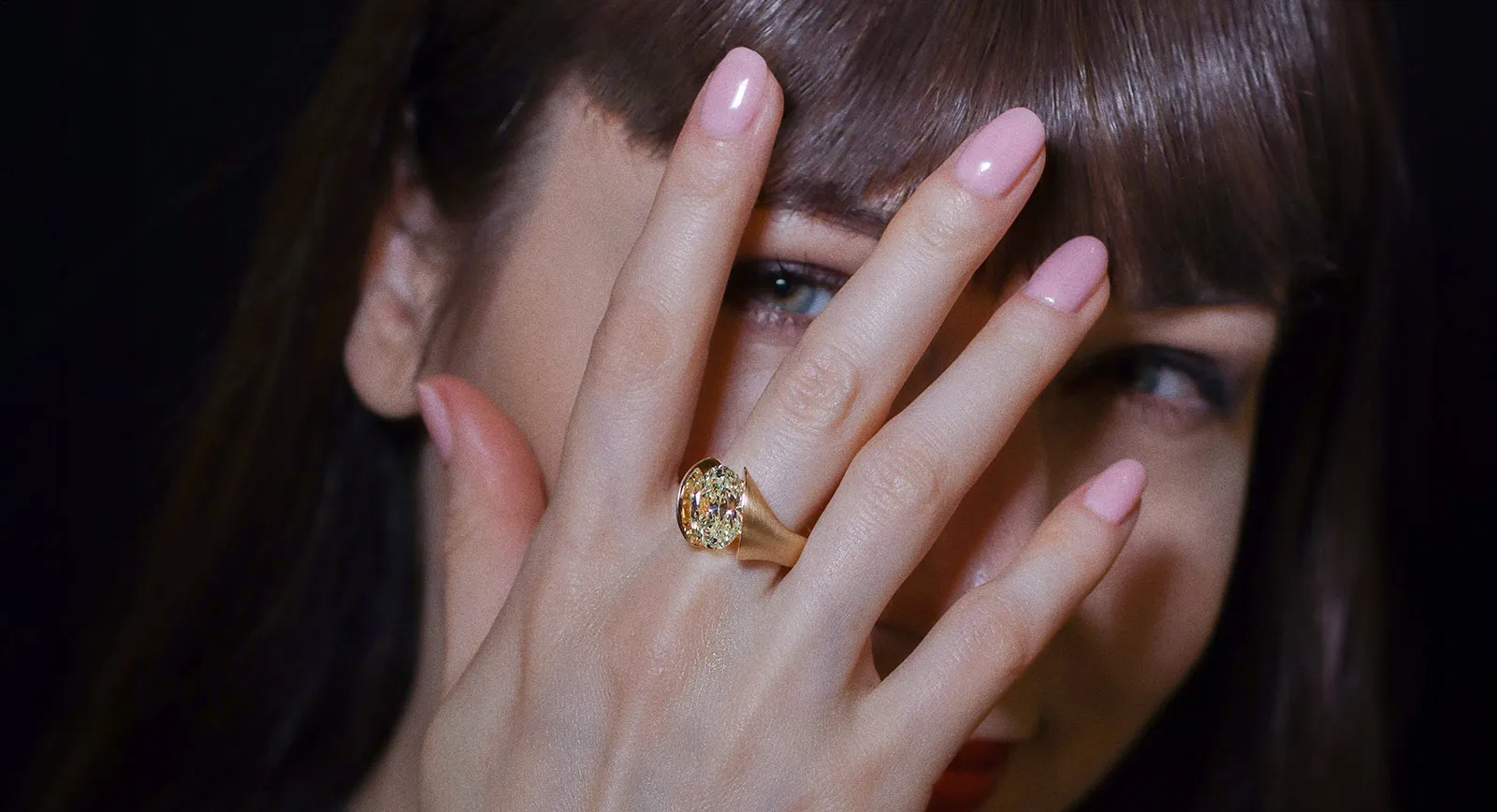
Audacious Diamonds: Pursuing Jewellery Perfection with Schaffrath
Very occasionally, I come across jewels that are so unusual I have to stop and ask how they can possibly be achieved by human hands. German brand Schaffrath excels at these stop-and-stare settings where diamonds appear to float in mid-air or hover between smooth curves of precious metal. Its Calla, Paradoxal and Liberté ranges include wearable feats of engineering that reflect more than 100 years of jewellery-making expertise. Today, its chief executive, Christian Schaffrath, the great-grandson of the original founder, is continuing to create diamond jewellery with a difference. If unconventionality is your preference, you’ve come to the right place…
When is a solitaire not just a solitaire? When it’s a Schaffrath solitaire, of course. All joking aside, this heritage brand places diamonds in ways that seem to defy the laws of gravity and craftsmanship without losing sight of the crisp, minimalistic aesthetic of its German roots. The family-run business was founded in January 1923 by brothers Adam and Alois Schaffrath, who hired six diamond cutters and steadily built a reputation for precision cutting and high-quality finishes. Today, it is Christian Schaffrath who continues this “obsession with perfection” alongside creative director Alexander Leuz, who always strives to “try the impossible” in fine jewellery design. Both are great-grandsons of the original founders, which means Schaffrath remains in the same generational hands!
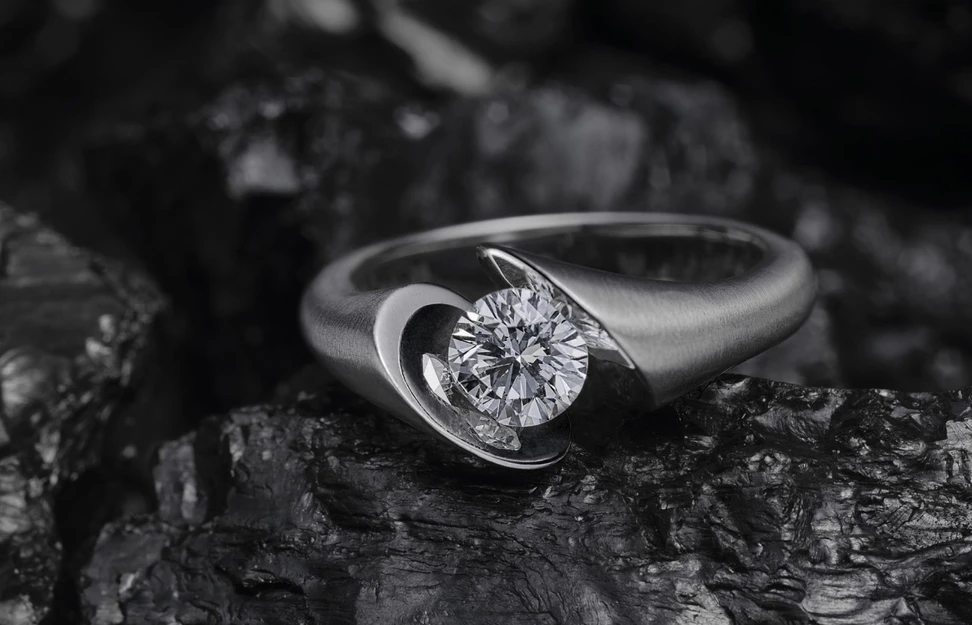
Schaffrath Calla ring with a 0.70 carat round brilliant-cut diamond in 18k white gold
What stands out for me is the focus on exceptional quality diamonds, precision settings and unconventional silhouettes. This sense of being outlandish is reflected in the business’ choice of logo – a mythical unicorn – that blends the elegance of horses with a hint of the fantastical. “We challenge ourselves because we’re obsessed with perfection,” Christian tells me. “Everything we do is different. In a way, we do the impossible.”
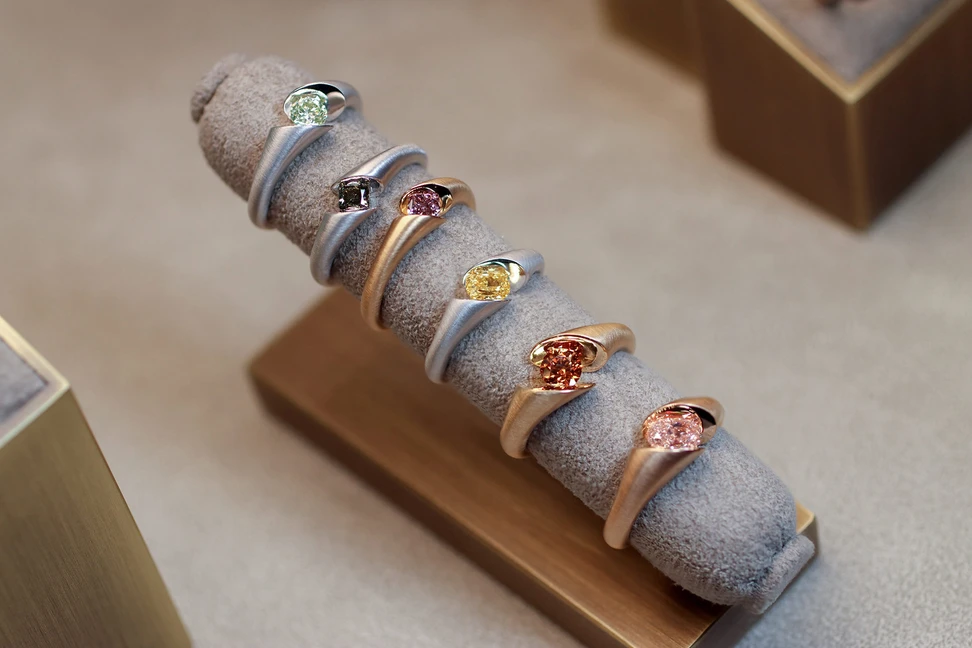
Schaffrath Calla Candy Edition rings in 18k yellow, white and rose gold, set with fancy-coloured diamonds
The Schaffrath Approach
Firstly, this is a family business, so even before we discover the brand’s jewellery creations, it’s important to know its ethos. Christian is joined by his cousin, who shares responsibility for continuing their family’s fascination with engineering, functionality, and nuanced setting techniques, such as spinning elements and free-moving diamonds. I was also pleased to hear that Schaffrath is based in the same building as its forefathers in 1923, albeit bigger and modernised.
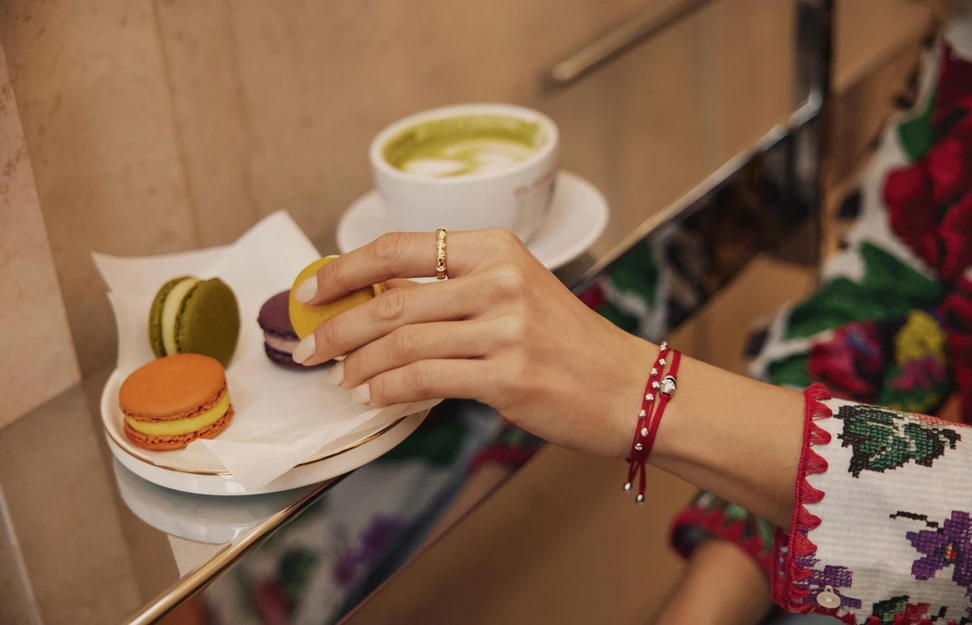
Pieces in the Schaffrath Colortaire collection, including a ring in 18k yellow gold with 13 diamonds, a bracelet with 0.30 carats of diamonds in 18k white gold, and a Colotaire Mesh bracelet in 18k white gold with four strands and nine diamonds
The business first began creating its own fine jewellery ranges in 1960 (prior to this, it had been focused on polished diamonds), and immediately, there was a sense it had to do things uniquely and independently. As others switched to production in the Far East, Schaffrath doubled down on German craftsmanship and challenged itself to produce lines that were not ubiquitous in the market. That meant looking at the humble solitaire diamond and thinking how it could be elevated into something new.
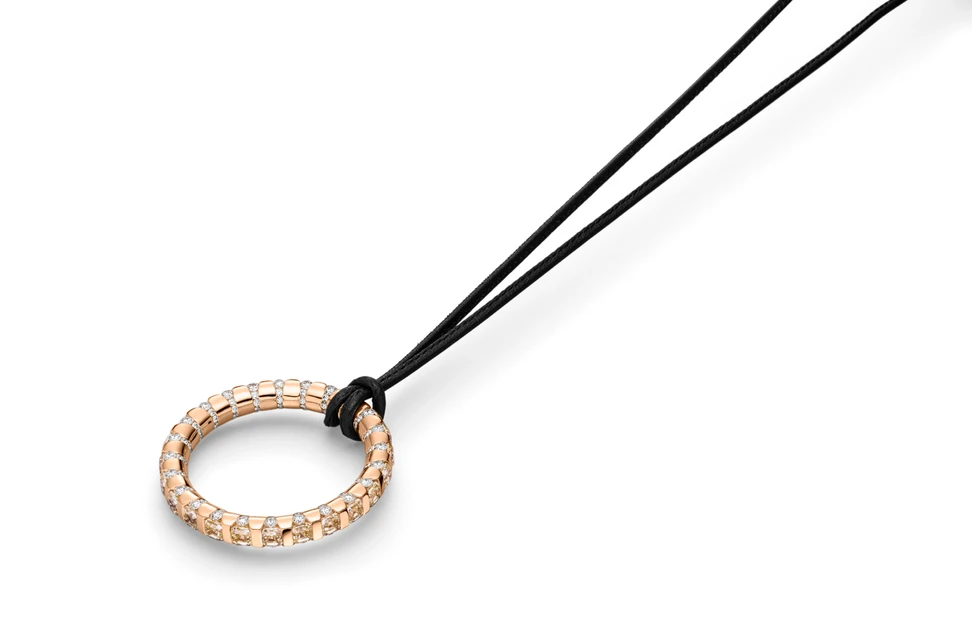
Schaffrath Paradoxal necklace in 18k rose gold with an adjustable leather strap, set with 6.05 carats of Asscher-cut diamonds in very light brown hues, and more than two carats of round brilliant-cut diamonds
Today, the engineering behind its unusual settings is supported by computer programs, but Christian assures me that “we need the imagination first” to bring these floating, almost alien-like amalgamations of metal and mineral to life. “It’s like architecture,” he says, “so we have to be sure what size we want to make, the outcome… it’s not like a regular ring.”
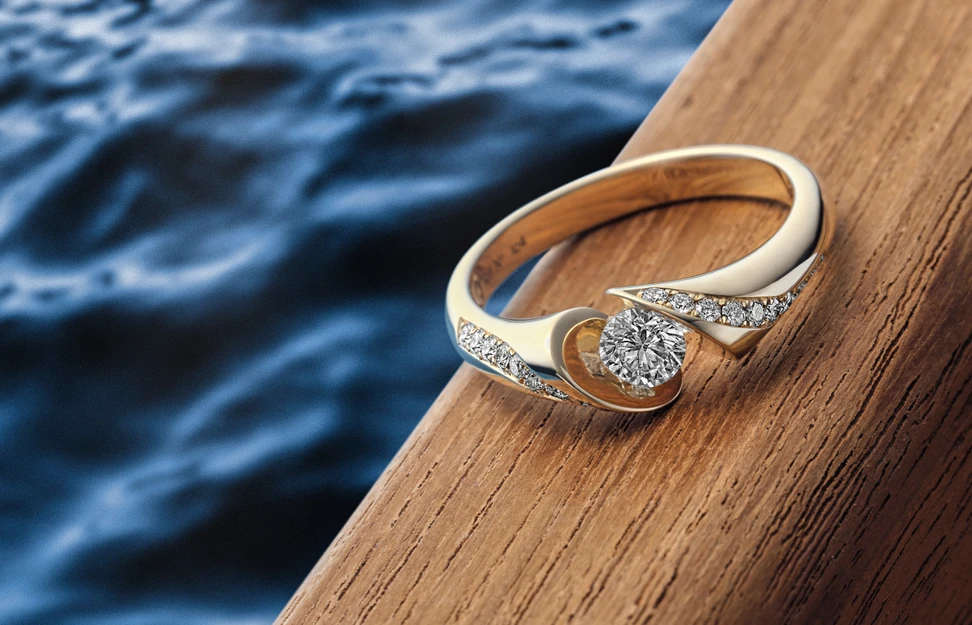
Schaffrath Calla ring in 18k yellow gold with a 0.70 carat round brilliant-cut diamond centre stone and 0.20 carats of shoulder-set diamonds
Crucially, it relies solely on handmaking, not mass manufacturing, so pieces are made by goldsmiths one by one, by hand. In our current fine jewellery landscape, that is a remarkable accomplishment and a testament to the integrity of the brand. Christian adds: “Everything we do is a one-of-a-kind, like made for size, or a tailor-made [based on] a stone selection by the customer. It’s a process that can take up to two months for one of the bigger pieces.”
It’s in our DNA; it runs in the blood somehow. Last year was the 100th anniversary of Schaffrath. We have to follow our ideas; we cannot make something that is replaceable. – Christian Schaffrath
Connoisseurs in China have responded particularly well to Schaffrath. The brand operates stores in Beijing and Hainan and will open in Shanghai later this year. “Whenever I travel there, I see young people, middle-aged people, tourists like us [who are] on the search for something extraordinary and individual, not like my friend has or my neighbour has, but like ‘I have it!’. Schaffrath is also in talks to open a boutique in Dubai and perhaps Riyadh, Saudi Arabia, so now’s the perfect time to take a closer look at its key collections.
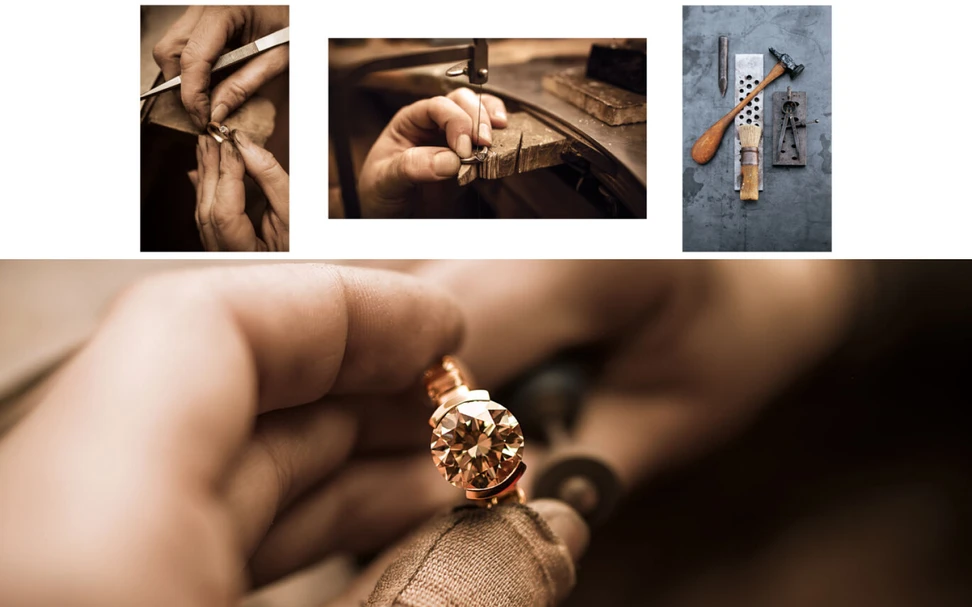
The process of crafting the Schaffrath Paradoxal ring, otherwise known as “the ring that cannot be”
Paradoxal
I would say that the jewel in the Schaffrath crown is Paradoxal, otherwise known as “the ring that cannot be”. This piece is designed to mystify with 68 cut diamonds and 16 natural brown diamonds that appear to fuse links of rose gold together… as if the diamonds themselves are holding Everything in place. This is topped with a fancy brown diamond solitaire, hugged by warm rose gold. What’s incredible about this piece is the amount of work put into the internal surfaces that sit next to the skin. These cleverly placed graduating round brilliant-cut white diamonds won’t be seen by anyone but the wearer as they slip the ring onto their finger in the morning and off again at night.
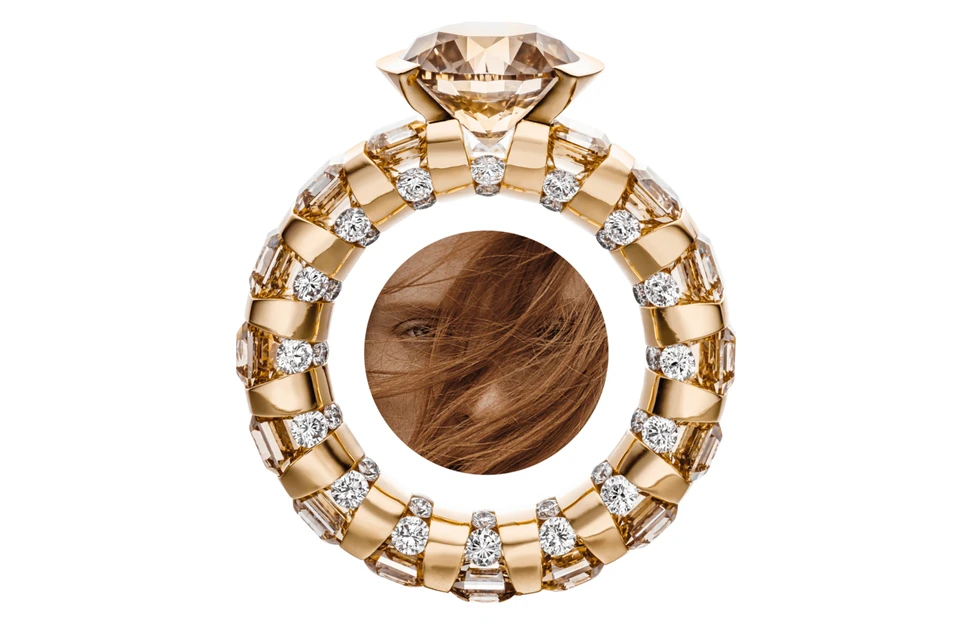
Schaffrath Paradoxal High Jewellery ring with 6.29 carats of round brilliant-cut light brown diamonds, 6.18 carats of emerald-cut light brown diamonds and 2.57 carats of round brilliant-cut diamonds, set in 18k rose gold
Christian says: “Sometimes I meet people who go, “Why are the stones on the inside when nobody sees it?’. But you know they are there, and it’s in our passion to make pieces this way. We have a strong belief in what we do.” New iterations of this ring include pear-shaped diamonds with a pear-shaped centre stone, which pushes the concept to the next level, in my opinion. Schaffrath first considered the idea in the summer of 2023 and has only now brought the piece to fruition, largely due to the challenge of sourcing the perfect diamonds with the lightest and most consistent shades to compliment rose gold.

A model wears a Schaffrath Paradoxal ring in 18k yellow gold with a 3.23 carat emerald-cut diamond, 5.45 carats of emerald-cut diamonds and 3.36 carats of round brilliant-cut diamonds, plus Paradoxal Creole earrings with 3.40 carats of Asscher-cut fancy yellow diamonds and round brilliant-cut white diamonds
The unique ring, which blurs the boundaries between reality and fiction, plays with the viewer’s imagination and leaves a lasting impression. The ingenious design and the great craftsmanship inherent in this creation take the zeitgeist of modern jewellery design to a new level. – Christian Schaffrath
Liberté
They say good things come to those who wait, and that’s certainly true of both the Liberté collection with free-moving diamonds and the L1062 ring, which is a refinement of the Liberté concept. Both required a significant investment in time, research and development to create the perfect finish. Think of this design as the most sensational cut, colour, and clarity of a white diamond solitaire set so that it can oscillate and scintillate within a mirrored concave form of gold, topped with a sleek bridge of gold. There are so many things to note about this design – its lightness, subtlety, ergonomics and micro-set diamond details that kiss the skin.
“It looks so simple, but it is so difficult to make,” Christian told me, adding that although there are echoes of a tension setting, that’s not what we are looking at here. And, thanks to the mirrored elements, the central diamond appears larger and more brilliant, helping to bolster the impact.
It’s the movement that is so unique, and you just have to see it in motion. This needs to be touched. It catches the light from all angles and creates the idea that the stone is free. We are giving it the freedom to move and show its beauty. – Christian Schaffrath
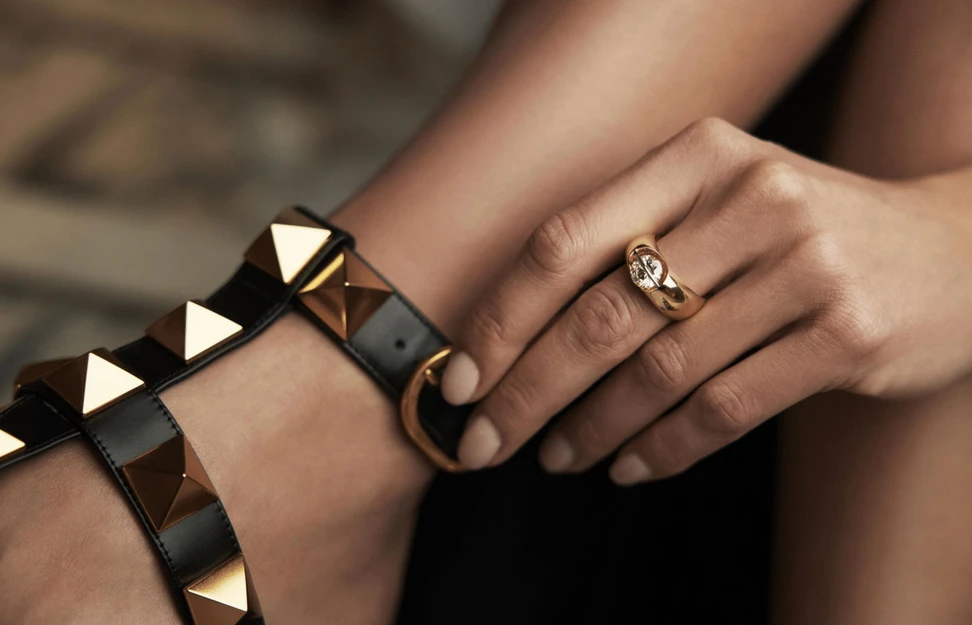
A model wears the Schaffrath Liberté ring in 18k yellow gold with a 2 carat G-colour, VS clarity centre stone
Calla, Colortaire, and the 360 Collection
The calla lily is a surprisingly common source of inspiration in the fine and high jewellery world, but I have never seen anyone approach this flower in the same way as Schaffrath. In this offering, organic curves of gold meet, but don’t touch, at a diamond solitaire that appears to float weightlessly as if held between two floral magnets. Again, like Liberté, the internal surfaces are mirrored to accentuate the diamond’s light reflection, while the outer surfaces are subtly matte and textured to create contrast. What started as a ring in 2011 has now bloomed into a comprehensive collection, including pendants, ear clips, studs, rings, eternities and bracelets set with fancy-shaped and fancy colour diamonds, too.
I am also a fan of the Colortaire collection – a more casual array of cord bracelets in a variety of colours with a Calla-style floating diamond that sits on the wrist – and the 360 Collection with a spinning element that rotates around a diamond solitaire. For the latter, Christian says it took him “more than one and a half years to develop the construction of the [360 ring],” which is like a classy but joyful spinning top on the finger.
A Dedication to Diamonds
My final question for the Schaffrath team was, why only diamonds? With such a mastery of unconventional setting techniques, wouldn’t it be sensational to see the same applied to juicy emeralds and fiery rubies? Christian has the simplest answer: “Diamonds are in our DNA.” However, there are pinpricks of colour on the horizon. They may only be conversations between Christian and Alexander at the moment, but there is the tantalising promise of exciting things to come. With the level of detail put into each creation, its handmade construction, innovative setting, and highest-quality materials, I can imagine that when Schaffrath explores coloured minerals, it will blow us all away.

WORDS
Katerina Perez is a jewellery insider, journalist and brand consultant with more than 15 years’ experience in the jewellery sector. Paris-based, Katerina has worked as a freelance journalist and content editor since 2011, writing articles for international publications. To share her jewellery knowledge and expertise, Katerina founded this website and launched her @katerina_perez Instagram in 2013.
